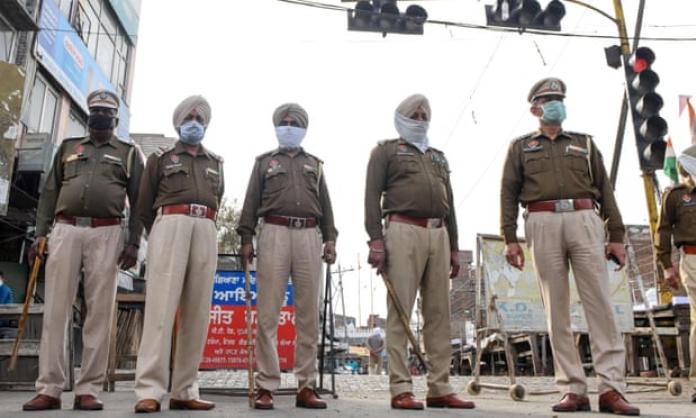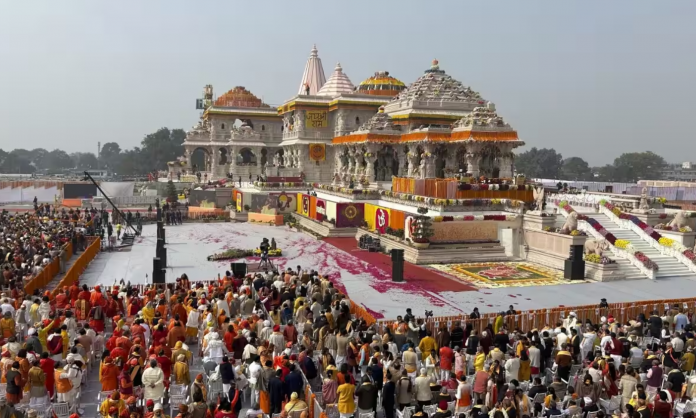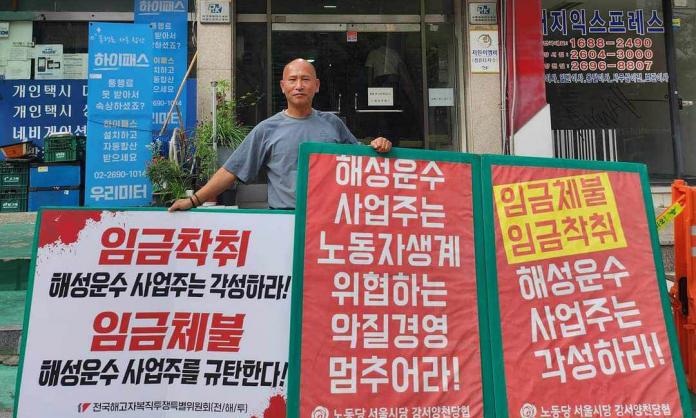Millions of workers across India were, like the rest of the 1.3 billion-strong population, caught off-guard by prime minister Narendra Modi’s evening announcement on 24 March. Starting the next day and for the next three weeks, businesses would be closed and everyone across the subcontinent confined to their homes to prevent the spread of the coronavirus.
With infections growing exponentially, health experts and parties across the political spectrum in principle support a lockdown. But the government’s execution has been devastatingly inept and potentially catastrophic. When the World Health Organization declared the virus a pandemic on 11 March, India still refused to call it a health emergency. The country has one of the lowest testing rates in the world and has done nothing to prepare either its health system, which will be overwhelmed if the virus takes hold, or its almost non-existent social safety net.
The prime minister, a hard-right demagogue whose record makes US president Donald Trump look like a moderate, seemed interested primarily in getting the media narrative right. According to a report in Caravan magazine, six hours before announcing the lockdown, Modi held a conference call in which he “personally asked over 20 owners and editors from the mainstream print media to publish positive stories about the COVID-19 pandemic” and to assure the public that “the government is committed to countering the impact of COVID-19”.
For almost everyone else, the lockdown came without warning. While middle- and upper-class people were quick to buy essentials, hundreds of millions could afford no such luxury. When they went out to get what they could, “the police began beating them up, beating up shopkeepers, forcing them to shut shops, and generally this created a tremendous sense of uncertainty”, according to Kavita Krishnan, a politburo member of the Communist Party of India (Marxist Leninist – Liberation). “Tens of millions of people in India are day labourers and migrant labourers, living ‘hand to mouth’ – that is, what they earn today with their hands determines what they can put into their mouths tonight”, she noted in an online video post.
Migrant labourers (from different Indian states) in large cities suddenly are out of work, out of food and out of accommodation. Across the country, hundreds of thousands descended on transport terminals to get the last services back to their home villages. If the government wanted social distancing, it succeeded only in creating chaotic crushes. Most were left stranded as the busses and trains ground to a halt, leaving people to walk hundreds of kilometres on foot.
Two days into the lockdown, finance minister Nirmala Sitharaman announced a relief package, which includes five kg of extra rice or wheat per house through the public distribution system – a national rations institution that offers a limited amount of subsidised or free staples for poor families – and small cash payments of up to 1,000 rupees (about A$20). But it has been widely ridiculed and denounced as worse than tokenistic. Hundreds of millions don’t have refrigerators, running water, sanitation, cash on hand or stores of food. They struggle to “stay put” for three days, let alone three weeks. Communists in the north report that they are besieged with distress calls from stranded labourers and people who have run out of food.
“People are co-operating and helping their neighbours, but no government aid is anywhere”, Vijay Vidrohi, state president of the All India Central Council of Trade Unions, says via email from Delhi. “Deaths from hunger have been reported from Bihar and Chhattisgarh [two of the poorest states in the country]. Daily newspaper Jansandesh Times is reporting that in Uttar Pradesh [the most populous state], people are eating grass – and this is a parliamentary constituency of the prime minister. The package announced by the government is package of lies. There is nothing new. They released funds from the old social schemes, but no social care or food for the working class, daily labourers or poorer peoples.”
As it became clear that the lockdown was generating mass movement, and as people began dying on their journeys home or going hungry in their dwellings, the central government attempted to shift responsibility to state governments. The ministry of home affairs on 29 March directed states to seal their borders to stop the movement of migrant workers and to enforce mass quarantines of those trying to get home. By this stage, reports of police violence and ritual humiliations of the labourers – making them frog march, lining them up bent over, even, in one instance, hosing a group down with chlorinated water – were cropping up all over.
“The migrant workers’ situation is a disaster, but we could go to a new scale of disaster”, Sajith, from the group Podhuvudamai Iyakkam (Socialist Movement), says over Skype from Chennai. “The economy is about to go down and the virus is going up. If you have a crisis like what’s happened in China or Italy or the United States hit here, it could be the greatest tragedy we have faced.” According to the Lancet medical journal’s 2018 Global Burden of Disease study, India’s health system ranks 145th out of 195 globally. On a per capita basis, it has six times fewer hospital beds than Italy – where the health system has been overwhelmed by the coronavirus. And while many things about COVID-19, the disease caused by the coronavirus, are still not clear, such as transmission rates in subtropical areas and how different lifestyle factors affect immune responses, India, home to almost 30 percent of the world’s poor, is potentially a timebomb, as Sajith explains:
“We have existing problems in India – social and economic backwardness, a very underdeveloped country with a huge population, a lack of growth, high unemployment, wages going down, decent jobs disappearing, increased contractualisation, decreased buying power and evaporating savings. People were already living precariously under Modi. The coronavirus has created enormous pressures in an already drastic situation.”
India is a mosaic of combined and uneven development – a land area three-quarters the size of the European Union but with nearly three times the population and greater linguistic and cultural diversity. There are wild divergences in economic and social development between and within states, from the relatively developed such as Kerala and Goa and to a lesser extent Tamil Nadu, Karnataka and Punjab, to the poverty-stricken Bihar, Chhattisgarh, Uttar Pradesh and Odisha.
In Tamil Nadu, in the south of the country, more than 60,000 people in permanent refugee camps are accustomed to lockdowns, police intimidation and surveillance. But even they were unprepared for Modi’s measures. Vasanth lives in a camp in the west of the state near the border with Kerala. He is worried about food supplies and the lack of sanitation across the more than 100 camps across the state. “The lockdown is important. We obey the orders. But we were not prepared for this”, he says through a translator over the phone. “Inside, normally buy supplies for only two or three days. But after two days it became difficult. But we can’t go out to work. People have had to break the lockdown to go out and work. I am worried about the potential for transmission. People are scared to go out to the doctor. Medical team has come to do some basic check-ups and found no infections. The main problem is the economic side right now.”
The refugees are usually under the watch of the notorious Q Branch, part of the intelligence wing of the state police. But the camps are cramped and, Vasanth says, the police aren’t coming in now because they fear the virus. It might have been a blessing to have the police off their case for a while, but government officials too are staying away, making life more difficult for those trying to get documents and permissions. “We have been abandoned”, Vasanth says. “Inside the camp, the situation is complicated. Many people have not understood the threat of the pandemic – the government hasn’t provided education or sanitation. But it’s the same everywhere. The consequences are not fully understood. People are starting to realise, but social distancing is very difficult in such a cramped environment. Our dwellings are small and hot – people are not used to staying inside. And the water supply and bathrooms are common, so it’s difficult to avoid mixing.”
From another camp just outside of Chennai, another young man explains that people are trying to protect themselves with homemade remedies. They too are running out of food, despite the state government increasing rations. So too are people outside the camps. “This is a crisis for everyone, not just refugees. But we are more vulnerable, and we have to be responsible as well. The camps are more prone to the spread. The government must start testing in the camps. If one person is infected, it will spread quickly.”
Podhuvudamai Iyakkam activists are trying to provide relief, taking donations and distributing food and soap supplies. But only the government has the resources required to stave off a disaster. Ravibha, a member of the group, worries about a potential agrarian crisis compounding the already strained situation, with farmers reportedly unable to harvest standing crops and supply chains affected by the lockdown. “This lockdown can’t work in a country like India. Provisions need to be made. If people have no food, the virus is nothing – they are not going to sit and starve, they have to get food, that comes first”, she says.
“In Tamil Nadu, most families have ration cards and access to the public distribution system. That’s not the case with migrant workers [they have to get back to their home states before they can access the rations]. It’s not the case with a lot of families in northern India. But even here, the demand for food has doubled the price of vegetables. Like everywhere in the world, there is panic buying, but many can’t buy much.
“That’s where capitalism has failed. Capitalism cannot resolve the people’s problems in an effective way – it just abandons people. The virus has shattered the whole world. Even the US and the UK are doing things that they wouldn’t normally do. They have been forced to do things to intervene. In India, the government has taken no reformative steps. It’s just the lockdown, without providing for people. If it keeps going, they will not be able to control the situation.”










